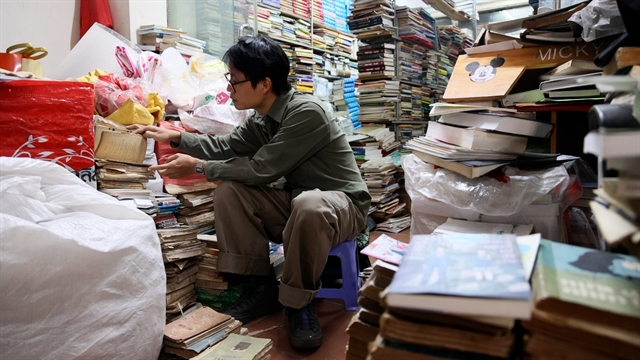 Life & Style
Life & Style

 |
| The Nine Nguyễn Dynasty Urns crafted for two years under King Minh Mạng stand in front of Thế Miếu yard in Huế Imperial City. Photo courtesy of Quảng Bình Tourism Department |
ULAANBATAAR Nine Nguyễn Dynasty Urns, installed in the courtyard of the Purple Citadel in Huế have been inscribed in the Memory of the World Register.
The world recognition was announced in Mongolia's capital on Wednesday during the 10th plenary meeting of Memory of the World Committee for Asia and the Pacific. The urns received unanimous votes by all 23 member countries.
The Việt Nam delegation included representatives from Ministry of Culture, Sports and Tourism, Foreign Ministry, Việt Nam National UNESCO Committee, Memory of the World Việt Nam Programme and Thừa Thiên - Huế Province officials.
The Nine Dynasty Urns were cast for two years, from 1835 to 1837 at the time of the King Minh Mang – in front of Thế Miếu yard, behind Hiển Lâm Các in Huế Imperial City, each representing a King of the Nguyễn Dynasty.
 |
| Pavillion of Splendour and Nine Nguyễn Dynasty Urns. Photo courtesy of Quảng Bình Department of Tourism |
All the urns, crafted with the best artisans of the time by the order of King Minh Mạng (1820 --1840) to symbolise the royal power of the ruling dynasty and showcase the Kingdom of Đại Nam's beautiful flora and fauna. The urns were created with the aspiration of building a strong and stable country for future generations.
Being unique, the urns were cast in 1835 and it took artisans one year to carve details of 153 scenarios and nine pamphlet on the urns' bodice to represent country's best produce.
 |
| Việt Nam delegation at the Memory of the World Regional Committee meeting. Photo courtesy of the delegation |
The 152 scenarios posses not only historic and artistic values, they are also authentic and rare resources for researchers as they also hold cultural, educational, geographical, medical, fengshui, and caligraphy values.
King Minh Mạng even made a step ahead of his time, by giving a woman's name to a cannal, an unprecedented practice in the royal court.
The Nguyễn Dynasty ruled the Kingdom of Đại Nam, as Việt Nam was then known, from 1802 until 1945 with 13 Kings with Gia Long the founding Emperor and Bảo Đại, the last.
 |
| Nhân Đỉnh, weighing 2,515kg, stands facing the altar of King Ming Mạng in Thế Miếu Temple. Photo courtesy of Quảng Bình Department of Tourism |
Other Kings, Dục Đức and Hiệp Hòa were dethroned and assassinated, Hàm Nghi led an anti-French campaign, Father and son Thành Thái and Duy Tân were forced to abdicate and went into exile and the last King, Bảo Đại were not attached to any of the urns.
All the royal urns still stand in their original placements since 1837 and remained intact through wars. The images bear mountains of the original homeland of the Nguyễn in Thanh Hóa Province, to the rice plant that has been the staple crop, to cannons, the major weaponry during the Nguyễn dynasty. King Minh Mạng foresaw ahead of his time and era.
Minh Mạng, the fourth son of Emperor Gia Long, ruled for 21 years and implemented significant reforms during his reign. Under his leadership, the country's territory reached its largest extent. In 1838, he made the decision to change the country's name to Đại Nam, and also renamed Thăng Long to Hà Nội, a name that has been kept until today.
Recognised as National Treasure Relics in 2012, the Nguyễn Dynasty Urns recognition today adds to the 10 heritage sites inscribed on the UNESCO Memory of the World Register in Asia-Pacific. VNS